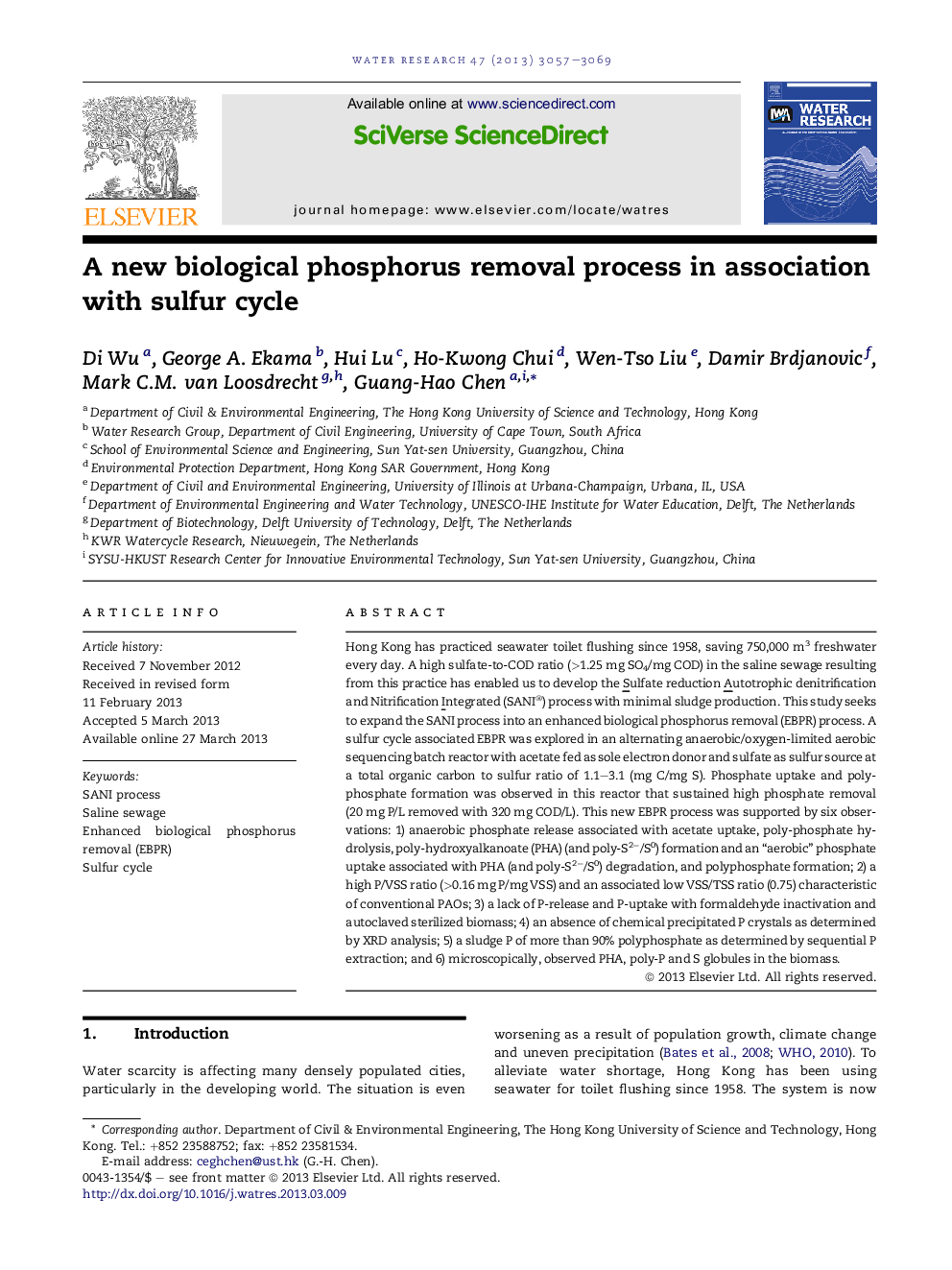| کد مقاله | کد نشریه | سال انتشار | مقاله انگلیسی | نسخه تمام متن |
|---|---|---|---|---|
| 4482121 | 1316848 | 2013 | 13 صفحه PDF | دانلود رایگان |

• A new EBPR was explored under low TOC-to-S ratio of 1.1–3.1 (mg C/mg S).
• This sulfur associated EBPR was explored for P removal from the saline sewage.
• P-release/uptake were observed in an anaerobic/oxygen-limited aerobic SBR.
• Six supportive observations were studied to confirm this S-associated EBPR.
Hong Kong has practiced seawater toilet flushing since 1958, saving 750,000 m3 freshwater every day. A high sulfate-to-COD ratio (>1.25 mg SO4/mg COD) in the saline sewage resulting from this practice has enabled us to develop the Sulfate reduction Autotrophic denitrification and Nitrification Integrated (SANI®) process with minimal sludge production. This study seeks to expand the SANI process into an enhanced biological phosphorus removal (EBPR) process. A sulfur cycle associated EBPR was explored in an alternating anaerobic/oxygen-limited aerobic sequencing batch reactor with acetate fed as sole electron donor and sulfate as sulfur source at a total organic carbon to sulfur ratio of 1.1–3.1 (mg C/mg S). Phosphate uptake and polyphosphate formation was observed in this reactor that sustained high phosphate removal (20 mg P/L removed with 320 mg COD/L). This new EBPR process was supported by six observations: 1) anaerobic phosphate release associated with acetate uptake, poly-phosphate hydrolysis, poly-hydroxyalkanoate (PHA) (and poly-S2−/S0) formation and an “aerobic” phosphate uptake associated with PHA (and poly-S2−/S0) degradation, and polyphosphate formation; 2) a high P/VSS ratio (>0.16 mg P/mg VSS) and an associated low VSS/TSS ratio (0.75) characteristic of conventional PAOs; 3) a lack of P-release and P-uptake with formaldehyde inactivation and autoclaved sterilized biomass; 4) an absence of chemical precipitated P crystals as determined by XRD analysis; 5) a sludge P of more than 90% polyphosphate as determined by sequential P extraction; and 6) microscopically, observed PHA, poly-P and S globules in the biomass.
Figure optionsDownload high-quality image (182 K)Download as PowerPoint slide
Journal: Water Research - Volume 47, Issue 9, 1 June 2013, Pages 3057–3069